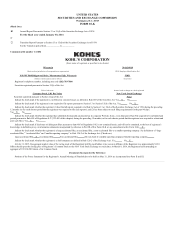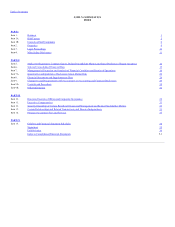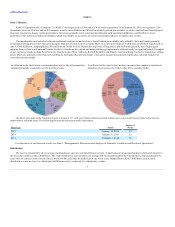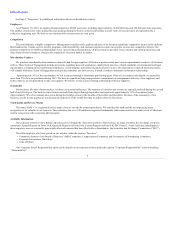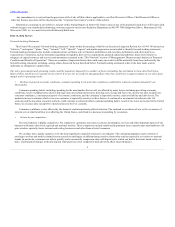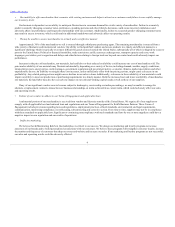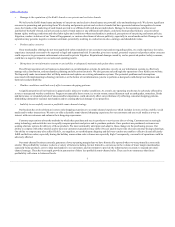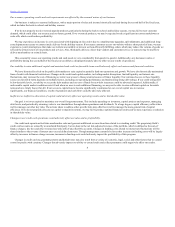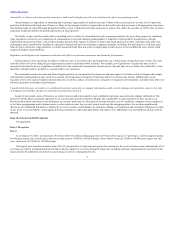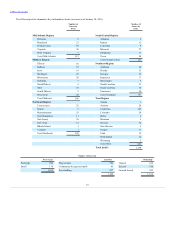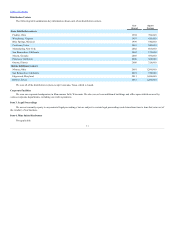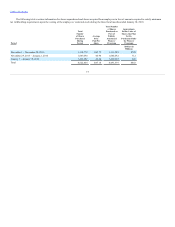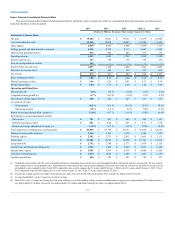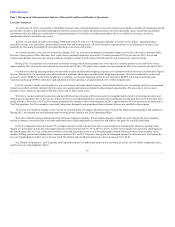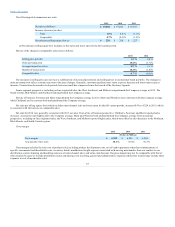Kohl's 2015 Annual Report Download - page 9
Download and view the complete annual report
Please find page 9 of the 2015 Kohl's annual report below. You can navigate through the pages in the report by either clicking on the pages listed below, or by using the keyword search tool below to find specific information within the annual report.
Table of Contents
An inability to attract and retain quality associates could result in higher payroll costs and adversely affect our operating results.
Our performance is dependent on attracting and retaining a large number of quality associates. Many of those associates are in entry level or part-time
positions with historically high rates of turnover. Many of our strategic initiatives require that we hire and/or develop associates with appropriate experience.
Our staffing needs are especially high during the holiday season. Competition for these associates is intense. We cannot be sure that we will be able to attract
and retain a sufficient number of qualified personnel in future periods.
Our ability to meet our labor needs while controlling costs is subject to external factors such as unemployment levels, prevailing wage rates, minimum
wage legislation, actions by our competitors in compensation levels and changing demographics. Competitive and regulatory pressures have already
significantly increased our labor costs. Further changes that adversely impact our ability to attract and retain quality associates could adversely affect our
performance and/or profitability. In addition, changes in federal and state laws relating to employee benefits, including, but not limited to, sick time, paid
time off, leave of absence, wage-and-hour, overtime, meal-and-break time and joint/co-employment could cause us to incur additional costs, which could
negatively impact our profitability.
Regulatory and litigation developments could adversely affect our business operations and financial performance.
Various aspects of our operations are subject to federal, state or local laws, rules and regulations, any of which may change from time to time. The costs
and other effects of new or changed legal requirements cannot be determined with certainty. For example, new legislation or regulations may result in
increased costs directly for our compliance or indirectly to the extent such requirements increase prices of goods and services, reduce the availability of raw
materials or further restrict our ability to extend credit to our customers.
We continually monitor the state and federal legal/regulatory environment for developments that may impact us. Failure to detect changes and comply
with such laws and regulations may result in an erosion of our reputation, disruption of business and/or loss of associate morale. Additionally, we are
regularly involved in various litigation matters that arise out of the conduct of our business. Litigation or regulatory developments could adversely affect our
business operations and financial performance.
Unauthorized disclosure of sensitive or confidential customer, associate or company information could severely damage our reputation, expose us to risks
of litigation and liability, disrupt our operations and harm our business.
As part of our normal course of business, we collect, process and retain sensitive and confidential customer, associate and company information. The
protection of this data is extremely important to us, our associates and our customers. Despite the considerable security measures we have in place, our
facilities and systems, and those of our third-party service providers, may be vulnerable to security breaches, acts of vandalism, computer viruses, misplaced
or lost data, programming and/or human errors, or other similar events. Any security breach involving the misappropriation, loss or other unauthorized
disclosure of confidential information, whether by us or our vendors, could disrupt our operations, damage our reputation and customers' willingness to shop
in our stores or on our website, violate applicable laws, regulations, orders and agreements, and subject us to additional costs and liabilities which could be
material.
Not applicable
As of January 30, 2016, we operated 1,164 stores with 83.8 million selling square feet in 49 states. Our typical, or “prototype,” store has approximately
88,000 gross square feet of retail space and serves trade areas of 150,000 to 200,000 people. Most “small” stores are 55,000 to 68,000 gross square feet and
serve trade areas of 100,000 to 150,000 people.
Our typical store lease has an initial term of 20-25 years and four to eight renewal options for consecutive five-year extension terms. Substantially all of
our leases provide for a minimum annual rent that is fixed or adjusts to set levels during the lease term, including renewals. Approximately one-fourth of the
leases provide for additional rent based on a percentage of sales over designated levels.
9

